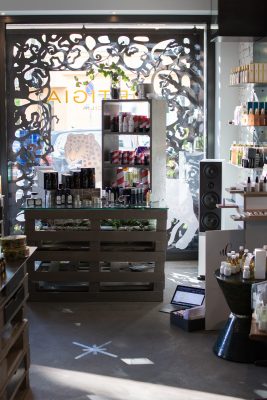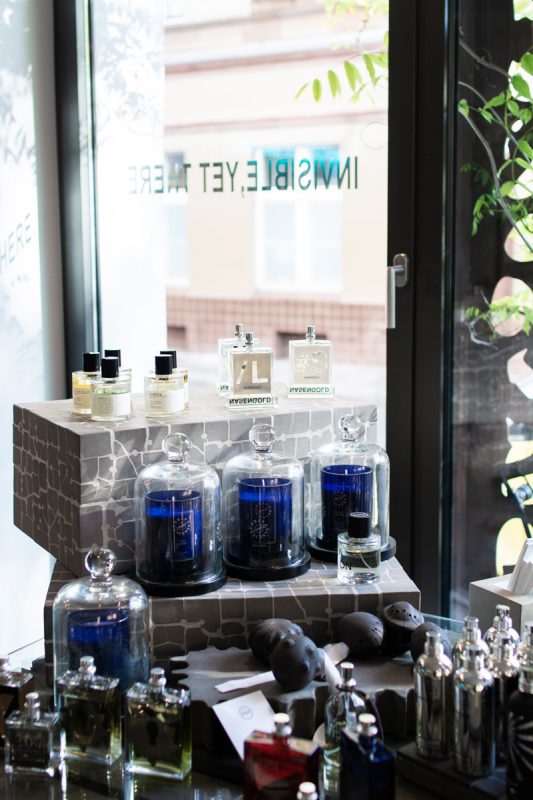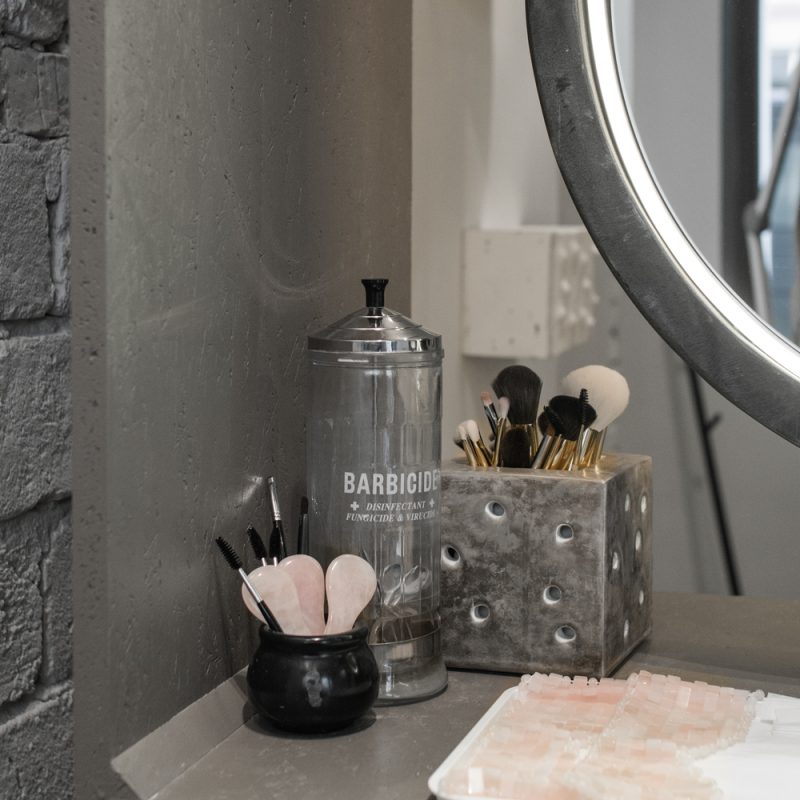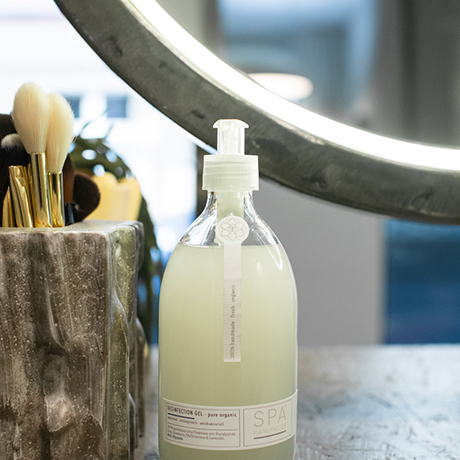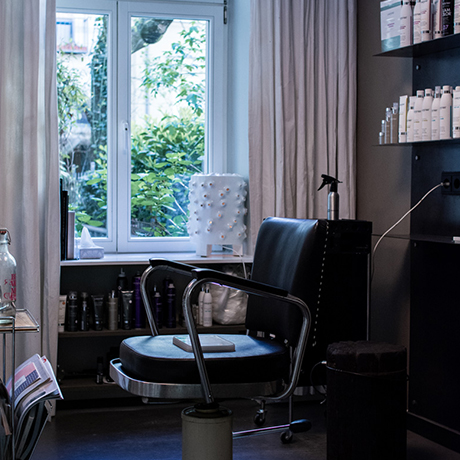Useful Information
SKIN
The skin is our largest organ. It can adapt its physical and chemical properties according to environmental influences. Skin condition depends on genetic predisposition, internal factors, and hormonal influences, as well as external factors such as climate or geographical changes. Stress, smoking and diet also have an influence on the condition of the skin, just as the seasons, indoor climates or illnesses have an effect on the skin’s appearance.
Skin Type: Normal
Features:
Normal skin is fine-pored, delicate, velvety smooth, supple and rosy. The skin looks healthy and is easy to maintain.
Needs:
Protection, humidification, detoxification, vitalisation, regeneration, anti-pollution, exfoliation.
Maintenance:
Cleanser, toner, protection, exfoliation, serum, ampoules, masks, oil, moisturising lotion.
Skin Type: Oily
Features:
It is typical for skin of the oily type to be coarse, strong, shiny and large-pored. This skin condition is very robust, resistant and less sensitive to solar radiation. Excess oil production occurs predominantly in areas where there are many sebum glands, including the forehead, chest and back. The rest of the skin can be normal or even dry.
Needs:
Deep cleansing, clarification, matting, balance, detoxification, glow, vitalisation, anti-pollution, regeneration, pore refinement, exfoliation, moisture.
Maintenance:
Effective, yet gentle cleansing, toner, exfoliation, cleansing masks, light AHA-products, vitamin A, vitamin C, retinol serum, lactic acid, balancing oils, enzyme peeling, hyaluronic acid.
Skin Condition: Combination
Features:
Combination skin consists of an oily area in the middle of the face (forehead, nose and chin), while the cheek areas show normal to dry skin conditions. Skin should be treated with different products according to localised conditions. Symptoms such as redness, irritation, a tight sensation and flaky skin can occur.
Needs:
Deep cleansing, clarification, barrier protection, balance, detoxification, glow, vitalisation, anti-pollution, regeneration, exfoliation, moisture.
Maintenance:
Effective, yet gentle cleansing, toner, exfoliation, cleansing masks, light AHA-products, vitamin A, vitamin C, retinol serum, lactic acid, balancing oils, enzyme peeling, ampoules, hyaluronic acid.
Skin Condition: Dry and Oily
Features:
The skin is shiny and possibly very flaky. It can resemble parchment and feel uncomfortably tight. This skin condition can be caused by extreme sun exposure or intense external acne therapy.
Needs:
Deep cleansing, balance, calming, detoxification, glow, vitalisation, anti-pollution, regeneration, moisture, nourishment, exfoliation.
Maintenance:
Effective, yet gentle cleansing, toner, exfoliation, cleansing masks, light AHA-products, vitamin A, vitamin C, retinol serum, lactic acid, balancing oils, enzyme peeling, ampoules, hyaluronic acid
Skin Condition: Dry and Sensitive
Features:
This skin condition is usually caused by the sebum glands producing too little sebum. The skin appears flaky, rough, and dull, causing tension, itchiness and possibly eczema. Red patches and dry, rough areas cause the skin to appear irritated. This skin type is prone to rosacea. Due to reduced fat an moisture content, the skin tends to age prematurely. Wrinkles may appear. The sensation of tension and dryness may be alleviated through consistent care with products rich in fat and moisture.
Needs:
Relief, calming, plumping, detoxification, glow, vitalisation, anti-pollution, regeneration, moisture, nourishment, protection, exfoliation.
Maintenance:
Gentle cleansing, cleansing balm, cleansing milk, double cleansing, toner, exfoliation, cleansing masks, AHA-products with a rich consistency, vitamin C and/or retinol serum, lactic acid, rich oils, enzyme peeling, ampoules, regeneration masks, hyaluronic acid.
Skin Condition: Very Dry and Irritated
Features:
Intense irritation is often based on very sensitive, extremely dry skin. It can be due to external circumstances, such as profuse sweating, heat and high humidity. The result is red, inflamed skin, often accompanied by a very unpleasant sensation of heat that can last for a long time.
Needs:
Relief, relaxation, detoxification, glow, vitalisation, anti-pollution, regeneration, barrier protection, moisture, nourishment, protection.
Maintenance:
Gentle cleansing, cleansing balm, cleansing milk, double cleansing, toner, products with a light consistency and soothing active ingredients, hyaluronic acid, light oils, enzyme peeling, ampoule treatments
Skin Condition: Acne
Features:
The skin cells are constantly regenerating, and the resulting excess cells flow off with the sebum, which can form together into a plug called a comedo. This is an ideal environment for bacteria, and as they multiply and inflammation develops, pimples and nodules form. In the most severe form of acne, acne conglobata, very severe and deep inflammation occurs, leading to larger bumps and scars.
Needs:
Clarification, deep cleansing, anti-inflammation, calming, balancing, anti-pollution, exfoliation, protection, matting.
Maintenance:
Effective, yet gentle cleansing, toner, exfoliation, cleansing masks, light AHA-products, vitamin A, vitamin C and/or retinol serum, lactic acid, balancing oils, enzyme peeling, ampoules, soothing lotions, hyaluronic acid.
Skin Condition: Hyperpigmentation
Features:
Melanin acts as a natural protection against ultraviolet rays. Melanocytes form a natural barrier against solar radiation. Excessive solar radiation and a lack of protection can lead to an uneven distribution of melanin and thus to the appearance of pigment spots. Other causes that favour hyperpigmentation are acne, cuts and hormonal changes. Burns can leave post-inflammatory hyperpigmentation and make the skin more sensitive to sun exposure. With age, the skin’s defence mechanisms weaken. If there is insufficient protection, the melanin concentrates in larger quantities on certain areas.
Needs:
Protection, matting, clarification, anti-pollution
Maintenance:
Care according to the skin’s condition, in combination with AHA-products. Vitamin C, lactic acid, salicylic acid and retinol may be used as well. The skin needs intensive sun protection.
Skin Condition: Rosacea
Features:
Rosacea is a skin condition that causes redness and inflammation on the face, primarily on the cheeks and nose, followed by the forehead and chin. Rosacea is characterised by more diffuse redness and a course of severe flare-ups.
Needs:
Anti-inflammation, protection, cleansing, anti-pollution, regeneration, balance
Maintenance:
Gentle cleansing, strengthening serum, hyaluronic acid, sun protection, products with a light consistency.
Fragrance Families:
Floral:
Characterised by flower essences such as violet, jasmine, rose, lily of the valley, lilac or tuberose.
Green Floral:
Tart, fresh notes of leaves and grass are present in addition to flower essences.
Fresh Floral:
Early bloomers such as hyacinth or lily of the valley are combined with citrus notes and fresh herbs.
Lively Citrus:
Citrus perfumes are characterised by tangy notes of citrus fruits, such as bergamot, lemon, lime, tangerine, sweet orange or grapefruit. Extracts from the bitter orange tree, such as orange blossom (neroli) or petit grain, are often added. Citrus notes are often combined with floral or chypre notes.
Tart Citrus:
Herby citrus perfumes are fresh and light, being mainly composed of citrus notes such as bergamot, lime, grapefruit or orange. The airy character of these fragrances are often grounded by aromatic and spicy notes.
Oriental:
Warm, sensual notes that are rooted in perfume’s history, from ingredients that were first used in India and Arabia at the dawn of fragrance creation, inspire oriental perfumes. They are often sweet and heavy, commonly comprised of patchouli, vanilla, sandalwood, and spices such as nutmeg, cloves or cinnamon. Compositions are based on sensual woods and resins, warm spices, animalistic notes and accents of tobacco or leather.
Chypre:
‘Chypre’ is a collective term for perfumes characterised by a fresh, citric top note, labdanum and patchouli. These are warm, erogenous, sensual fragrances.
Woody:
Woody perfumes are warm, dry and elegant, dominated by opulent notes such as sandalwood and patchouli. Cedar and vetiver provide a dry character. These fragrance chords are often enriched by a touch of citrus or another aromatic note.
Fougére:
The typical Fougère chord is made of up lavender, oak moss and coumarin. The scent is characterised by the interplay of lavender in the top note and oak moss in the base, and are often referred to as watery, woody or even floral.
Floriental:
Floriental fragrances combine floral and oriental notes.
Fruity:
Fruity notes of peach, apple, pineapple or red fruits dominate these fragrances. They are warm, naturally sweet, and are often combined with floral notes. These light, fruity fragrances are particularly popular in summer.
Aromatic:
Aromatic fragrances have a base of sage, rosemary, cumin, lavender and other spicy and grass-scented plants, and are complemented with citrus notes or spices.

 Deutsch
Deutsch
